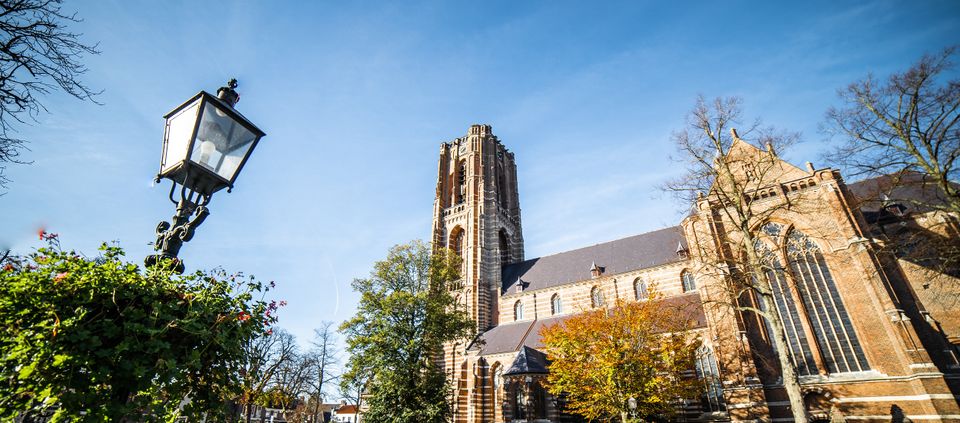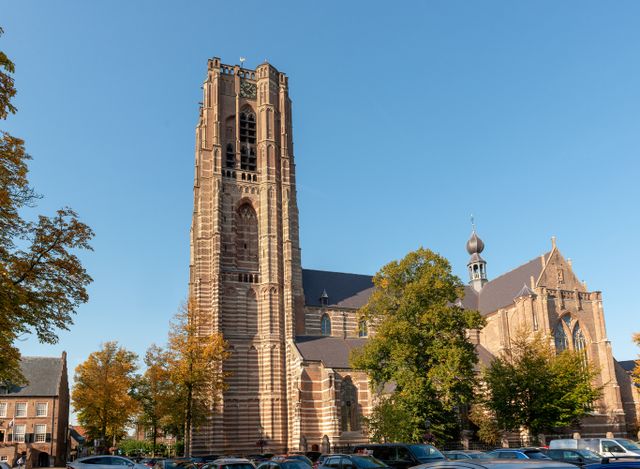St. Peter's Basilica

Whichever side you approach Oirschot from, the imposing St. Peter's Basilica always towers above historic Oirschot. Anyone who sees the basilica for the first time will be surprised by its size and appeal.
History of the Church
The first St. Peter's Church on this site was built in 1268. This church burned down in 1462. The church was rebuilt. Because construction was regularly halted due to lack of funds, the church was not completed until 1515. The current St. Peter's Church is almost identical to the then completed church building. The church and the tower have regularly suffered from disasters, fires and wars over the centuries.
The church is 86 meters long and 23.5 m…
Whichever side you approach Oirschot from, the imposing St. Peter's Basilica always towers above historic Oirschot. Anyone who sees the basilica for the first time will be surprised by its size and appeal.
History of the Church
The first St. Peter's Church on this site was built in 1268. This church burned down in 1462. The church was rebuilt. Because construction was regularly halted due to lack of funds, the church was not completed until 1515. The current St. Peter's Church is almost identical to the then completed church building. The church and the tower have regularly suffered from disasters, fires and wars over the centuries.
The church is 86 meters long and 23.5 meters high inside. The architectural style of the church is described as Kempen Gothic. Most Gothic churches are built of natural stone, but because natural stone was not readily available in this region, brick was also used. This alternation of layers of brick with natural stone – the so-called layers of brick – is a typical feature of Kempen Gothic.
After the Peace of Munster, St. Peter's Church fell into the hands of the Protestants. All altars, statues, paintings and stained glass windows had to disappear with the exception of the choir stalls. The Catholics had a barn church in the Nieuwstraat from 1672. The Catholic Church on the Vrijthof was then used as a butter market, bell foundry and wood storage facility. After the French invasion, the Catholics regained the neglected church in 1799. The tower then fell into the hands of the municipality, which at the time barely had money for restoration.
The tower
The tower was built in the same late Gothic style as the church. This tower has also been regularly destroyed and rebuilt. In 1904, the entire side of the tower collapsed with a thunderous noise. The rebuilt tower was destroyed again during the Second World War.
The church suffered a lot during the Second World War; the interior is largely burned. The church was rebuilt in the years 1945-1952 and the restoration of the tower was completed in 1963.
The tower, including the rooster, is 72 meters high. You now have to climb 276 steps to enjoy a panoramic view at the top. There are bells in the tower and a carillon was installed in 1975; there are 50 bells in total.
From 2009 to 2012, the "restorations of all restorations" took place, during which both the interior and exterior of the church were completely restored.
St. Peter's Basilica
In 2013, the St. Peter's Church was given the honorary title of "basilica" by Pope Benedict XVI. Since then we have been talking about St. Peter's Basilica in Oirschot.
The church is part of the parish of Sint Odulphus van Brabant. The church still serves as the house of God. The basilica is home to the annual St. Matthew Passion and organ or carillon concerts are regularly given. In addition, the church opens its doors to many social or cultural activities such as Halloween and the exhibition of the Oirschotse Amateur Artists.
The vestibule of the basilica is open every day. The basilica itself is open at varying times. During the opening of the basilica, members of the church guard supervise and provide information to visitors upon request.
At Visit Oirschot you can book a tour of the basilica or a tower climb, both led by a guide.




